TREES
(eight of them)
Today I went to The Ohio State University. There are trees there. Who knew? As Gabriel Popkin explained so well in her article (LINK), a lot of otherwise well-educated people are “tree blind.” I’m a botanist, so I guess I’m somewhat less tree blind than most folks, but still have a lot to learn, especially about oaks and hickories …and pines …and hawthorns, and…

A parking lot that practically an arboretum!
American sycamore
(Platanus occidentalis)
American sycamore is also a lowland tree, occurring mainly along rivers, ut it also does well as a street tree, perhaps because of similar stresses, namely low oxygen concentration in the soil around the root system.
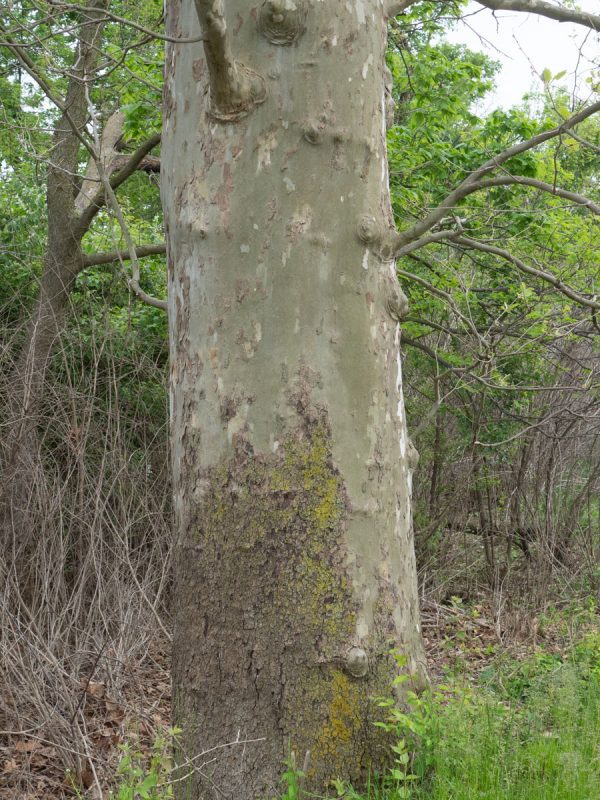
A large sycamore by the river and by the road.
Sycamore can get very big! In “Flora of West Virginia,” P. D. Strausbaugh and Earl L.Core mention some pioneers named John and Samuel Pringle who lived in a hollow sycamore tree near the present site of Buckhannon (Upshur County WV) from 1764 to 1768. Sounds like fun, but it could get old after a while. (“I am so sick of this sycamore!”)
The bark is distinctive, with pieces sloughing off in irregular jigsaw-puzzle like pieces. Eventually it become quite white (in very old specimens).
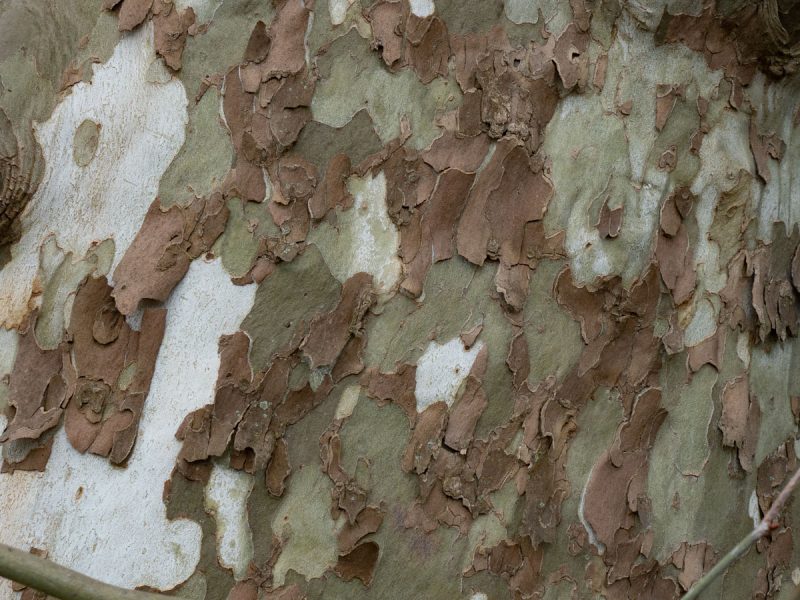
Sycamopre bark looks like a jigsaw puzzle!
The leaves are alternate in arrangement, simple in complexity, and palmately lobed. (Were it not for the non-opposite leaf arrangement, one could mistake this for a maple.)
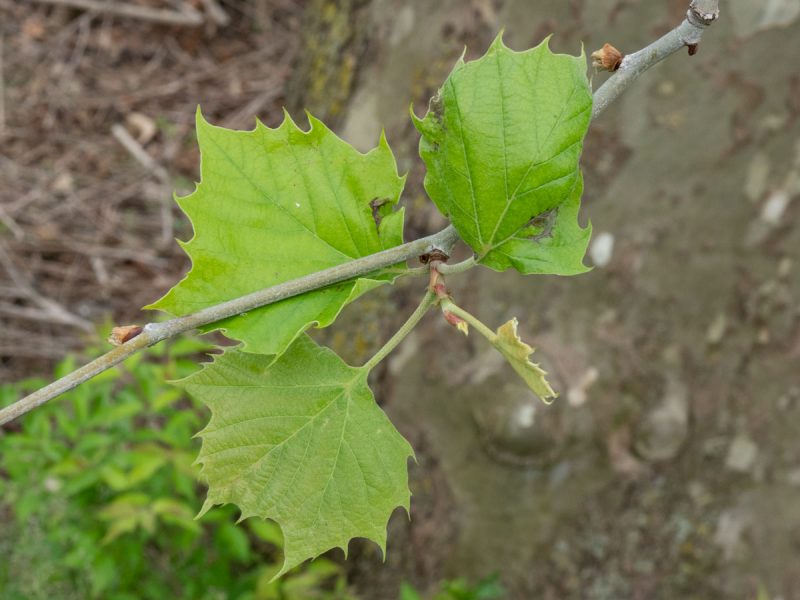
American sycamore looks somewhat maple-ish,don’t you think?
American sycamore is sometimes called “buttonwood” A web site called “Dave’s Garden” (LINK) has an explanation, saying the name is self-explanatory as it was a favorite wood for making buttons. Dave also tells us that the New York Stock Exchange was founded in 1792 according to a pact made beneath a sycamore growing along Wall Street, henceforth called the “Buttonwood Agreement.”
Eastern Cottonwood
(Populus deltoides)
At Waterman Agricultural and Natural Resources Laboratory on Kinney Road (better known as “Waterman Farms”), a drainage ditch meanders across the tract. Low-lying soil is home to eastern cottonwood (Populus deltoides).
This is a fast-growing lowland species, in the same genus (Populus) as aspen. Here’s a tree joke: Question: Why do places like Indonesia, India and China have so many aspen and cottonwood trees? Answer: Because those are very Populus places!
Eastern cottonwood leaves are distinctively triangular. The specific epithet “deltoides” in in reference to the leaf shape.
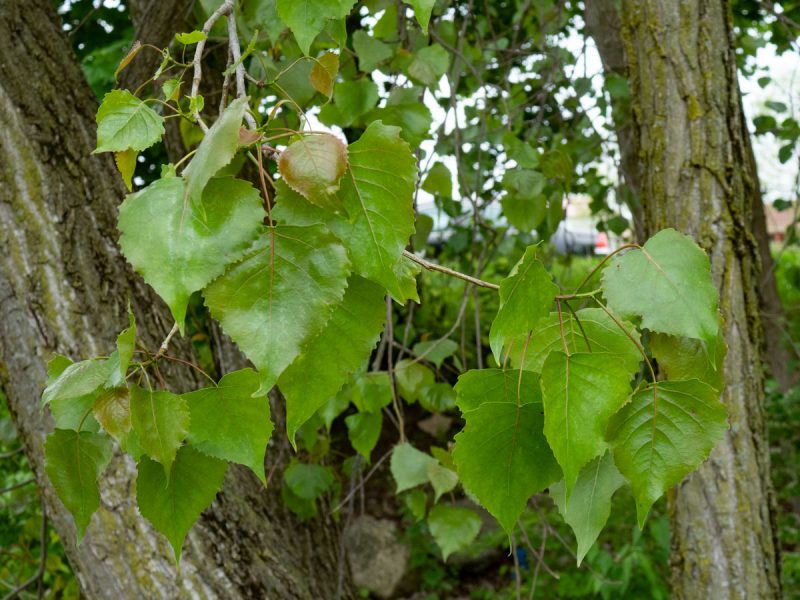
Eastern cottonwood has deltoid (triangular) leaves.
Aspen and cottonwood leaves tremble in the slightest breeze because they have flattened petioles. (I call them “linguine leafstalks.”)
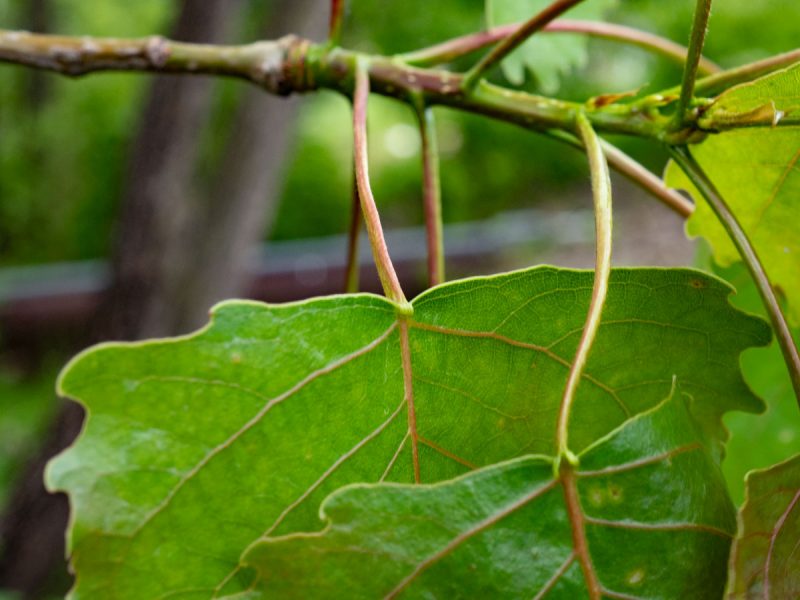
Linguine leafstalks!
Ohio Buckeye
(Aesculus glabra)
Ohio buckeye is a distinctive small tree, owing to its large, oppositely arranged palmately compound leaves. There are many of them growing along the Olentangy River Road parking lot.
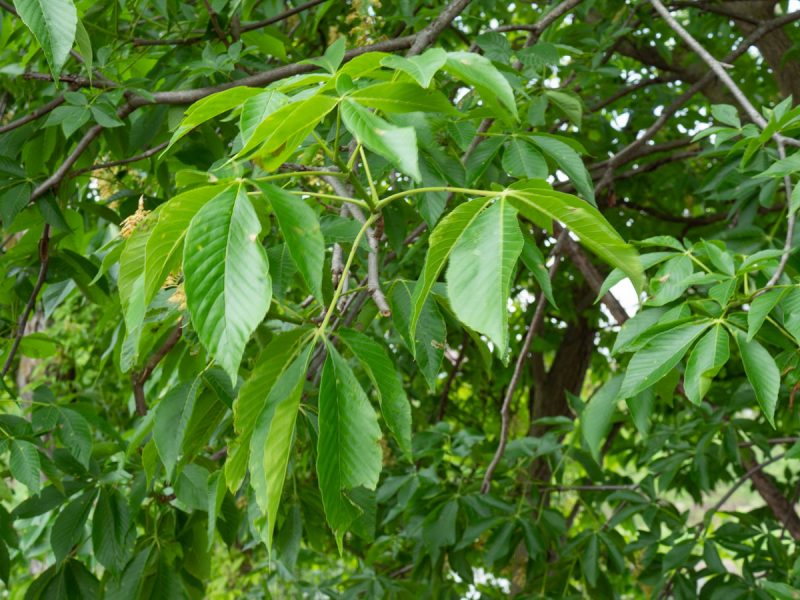
Ohio Buckeye leafs out very early.
As explained so well by Joe Boggs, writing for OSU Agricultural Extension HERE (link) an odd syndrome of drooping laves is caused by the presence of the larvae of a small native moth called the Buckeye Petiole Borer (Proteoteras aesculana). Eggs are laid on the leafstalk and a caterpillar bores into it, where it devours some of the contents, cutting off circulation to the leaf, which eventually dies and drops to the ground.
American elm
(Ulmus amaericana)
Elm (genus Ulmus) have leaves that are simple in complexity, with a doubly-serrate margin, and a peculiarly unequal-sided leaf base. There are two common species in Ohio –American elm (U. americana) and red/slippery elm, U. rubra. They are quite similar. Red elm leaves are more scratchy above than are those of American elm, and there are also some differences in the bark and the fruits.
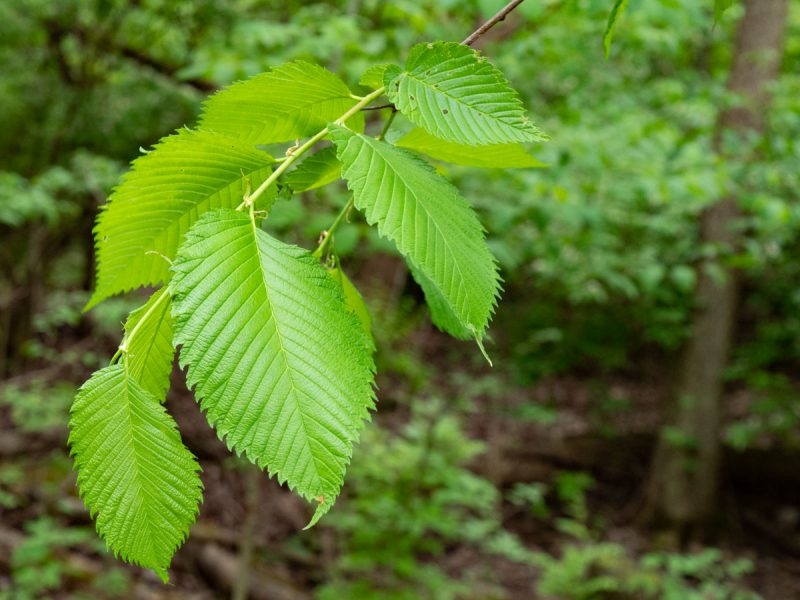
American elm usually occurs as small trees because they soon succumb to Dutch elm disease.
In North America, elm tree populations are a mere remnant of what they once were. As explained very well by the Morton Arboretum, the disease –which is probably of Asiatic, not Dutch, origin was accidentally introduced to the U.S. in the 1930’s. It is a fungus that is carried by two species of bark beetles. All of our native elms are susceptible. The fungus blocks the water-carrying xylem tissue, causing affected branches to wilt and die. Because elms reproduce at an early age, there are still elms around, just not many forest giants like there once were. In her “tree blindness” article, Popkin mentions several other introduced tree pathogens, citing primarily the emerald ash borer as a consequence of global trade, whicj is noted to be “only the latest iteration of this sad story; chestnuts, hemlocks and elms have already taken major hits from foreign pests.”
Hackberry
(Celtis occidentalis)
Hackberry is a member of the elm family (Ulmaceae) and shares with elms the overall leaf appearance –simple, alternate, doubly-serrate, and with an unequal-sided leaf base.
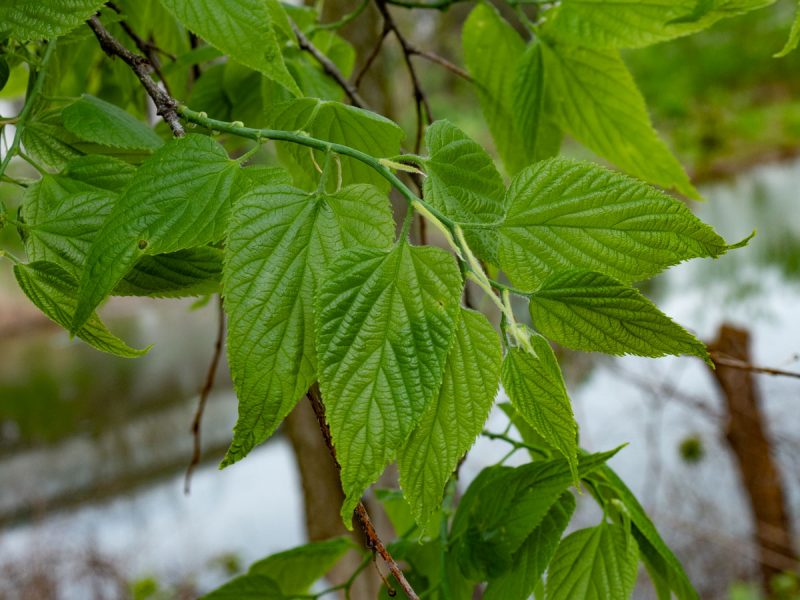
Hackberry leaves are unequal-sided at the base, a telltale feature of the elm family.
Just based on the leaves, hackberry is a pretty indistinctive tree. It looks vaguely elm-like. In fruit, it stands apart from elms by bearing little pea-sized drupes, very unlike the dry flat winged samaras of elms. Hackberry bark is more deeply furrowed than any other Ohio tree. Later in the season look for little pencil-eraser shaped projections on the bottoms of hackberry leaves that are galls caused by a psyllid (a type of true bug in the order hemiptera). According to the Texas A&M extension service, these litle bugs sometimes enter homes!
Sugar maple
(Acer saccharum)
The “M” in “Madcaphorse (the nemory hint for trees with opposite leaves), maples have opposite leaves. In out area all but one (boxelder maple) have simple leaves that are palmately lobed. This trees was seen in the woods adjacent to the Turf Farm at Waterman.
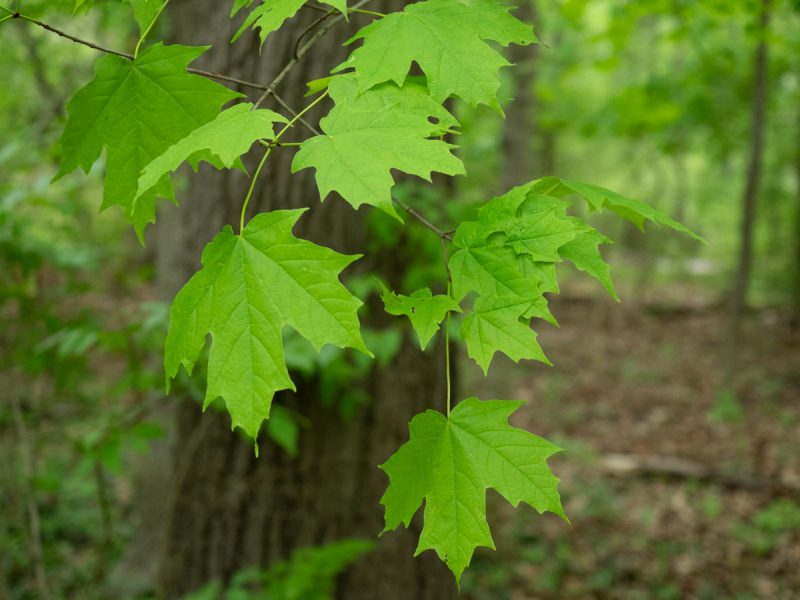
Sugar maple leaves are simple,. but palmately lobed.
Sugar maples are nice and all, and yes they are native, but many forest ecologists are alarmed that sugar maple is doing too well. AS documented in a recent Proceedings of the 19th Central Hardwood Forest Conference, sugar maple is displacing oak species in upland forests throughout the northeast and midwest. The shift is attributable to disturbance, habitat fragmentation, and other biotic
pressures.
American Beech
(Fagus grandifolia)
American beech is recognizable by bark alone: smooth and gray, and unfortunately too often carved with romantic graffiti (but thankfully not this specimen at the Turf Farm woods).
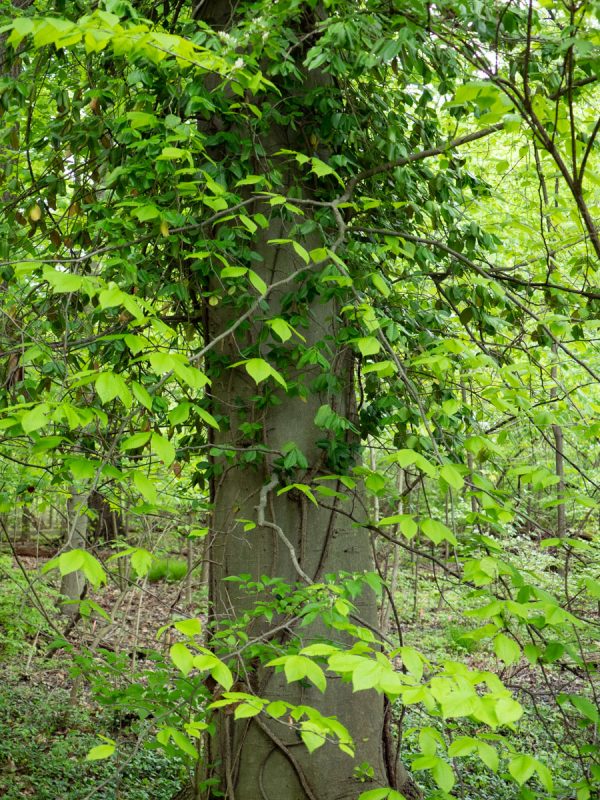
American beech has smooth gray bark.
Beech is a shade-intolerant tree that is a dominant member of the forest understory. In the same family as oaks (Fagaceae), it produces nuts that are important for wildlife, especially turkey.
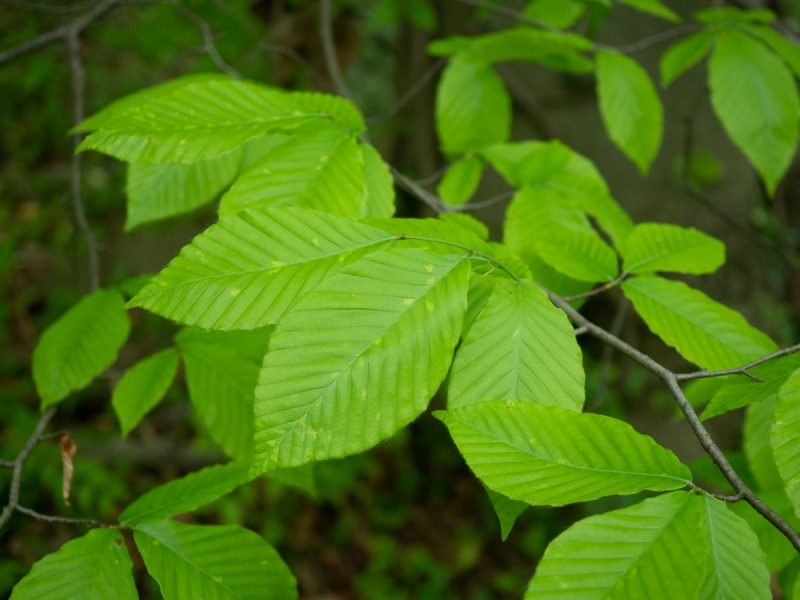
American beech leaves are entire, serrate, and alternate in arrangement.
Redbud
(Cercis canadensis)
This is the tree the artists and editors of the New York Times used to illustrate their “Tree Blindness” article. A good choice, as it is striking in many respect and I imagine it is indeed a great thrill to watch as “pollen-drunk” bumblebees forage on the flowers. This photo is from last year, when they were more fully leafed out and pretty.
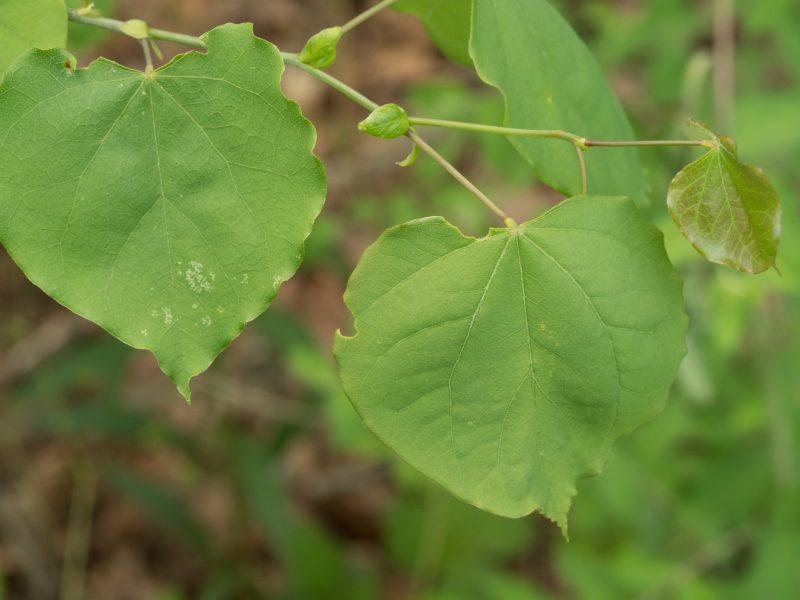
They should move Valentine’s Day to May so that these little hearts could be put to good use!
